
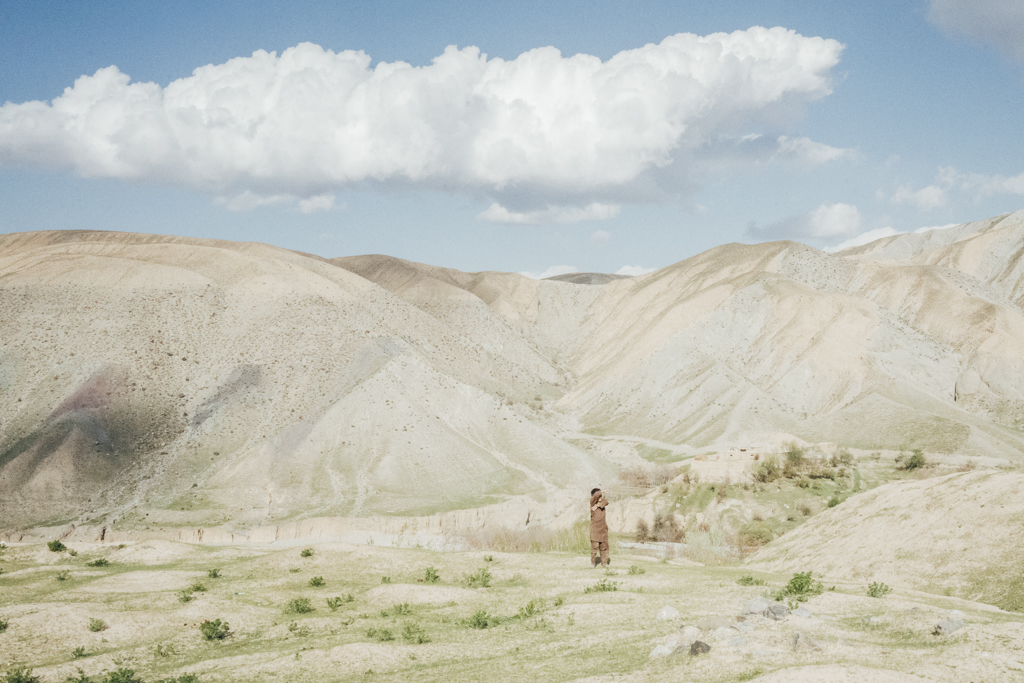
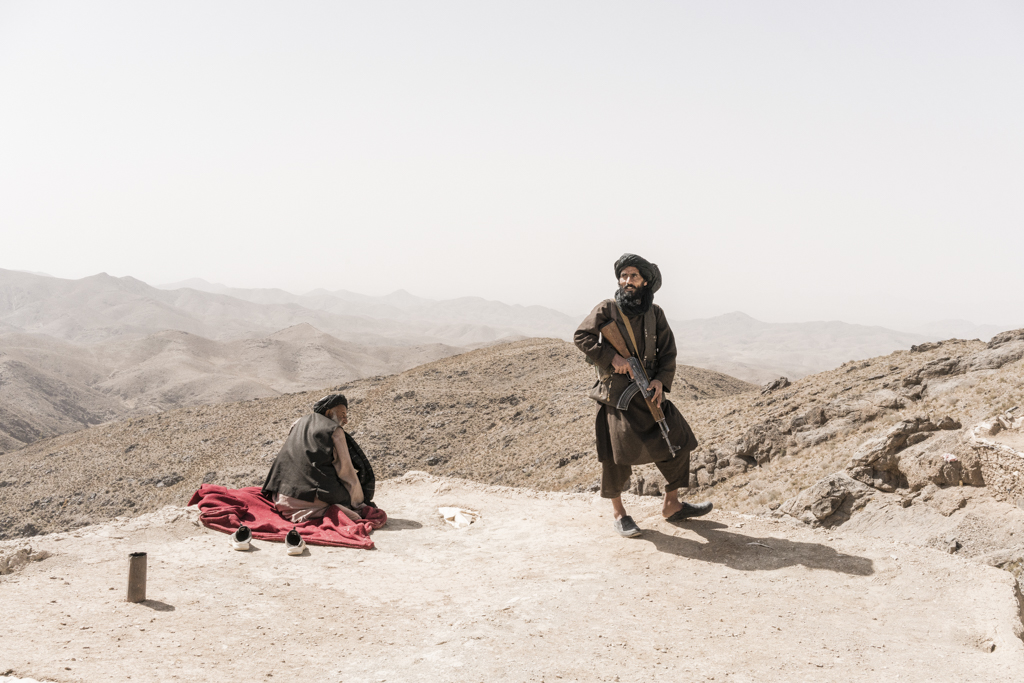
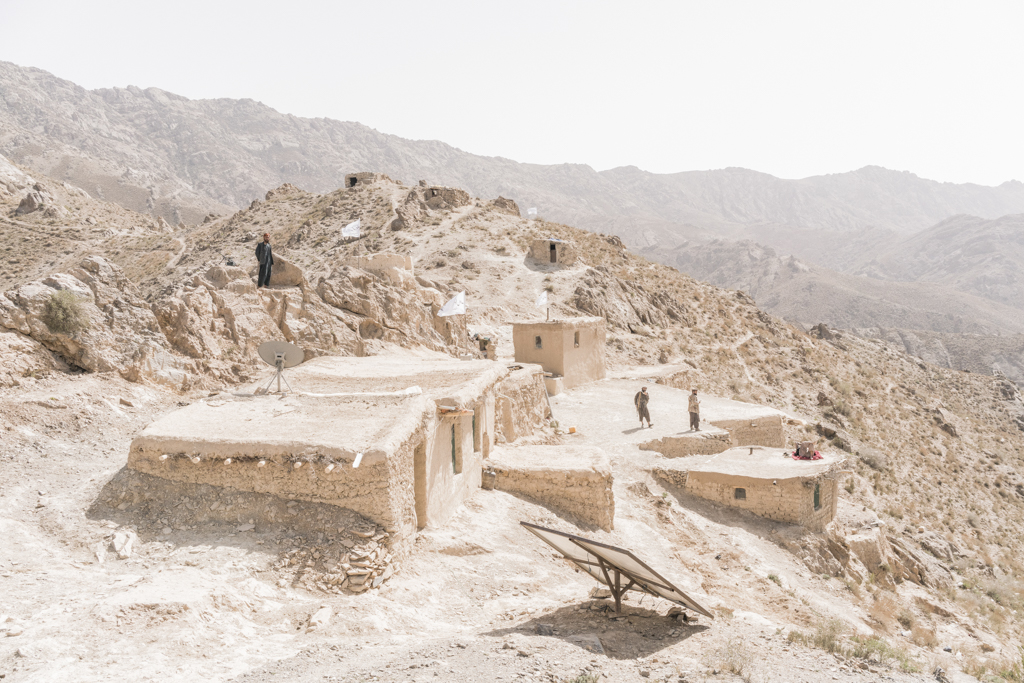
Afghanistan’s Post-NATO Battle Lines
With the looming withdrawal of U.S.-led forces from Afghanistan, militias are filling a security void the Afghan government cannot. But at what price?
With a gray pakol on his head, Jalal stares outside his window at the village of Khinjan, below the Salang pass in Afghanistan’s Baghlan province. The small, rural community is surrounded by rocky hills and snow-capped Hindu Kush peaks. Jalal recalls the day in 2004, when a boy came running to him saying that 27 members of his family had just been killed and 14 others injured in a NATO bombing of his home in the nearby Andarab valley.
“I heard the sound,” he says. “I knew something happened there. They accused me of having stored weapons in there. It was a miscommunication. We were a peaceful community.”
It was the hardest day of his life, much of which has been spent as a mujahid. Since the age of 16, Jalal has been fighting, beginning with the Soviets. But he is no longer fighting foreigners. Now in his 50s, he commands a militia of Khinjan’s civilians to defend the district against Taliban roadside bombs and ambushes.
“The army has tanks. These are our armored vehicles,” he says, laughing as he leaves the village with his men in a white Toyota Corolla. “The government and the NDS (the Afghan secret service) pay us money and give us weapons. They couldn’t make it against the Taliban without our help.
“The government is like the husband of an unfaithful woman. Once he sees his wife’s lover in his house, instead of fighting him, he seeks the help of the neighborhood to defeat him. If the government cannot provide safety to us, we better do it ourselves.”
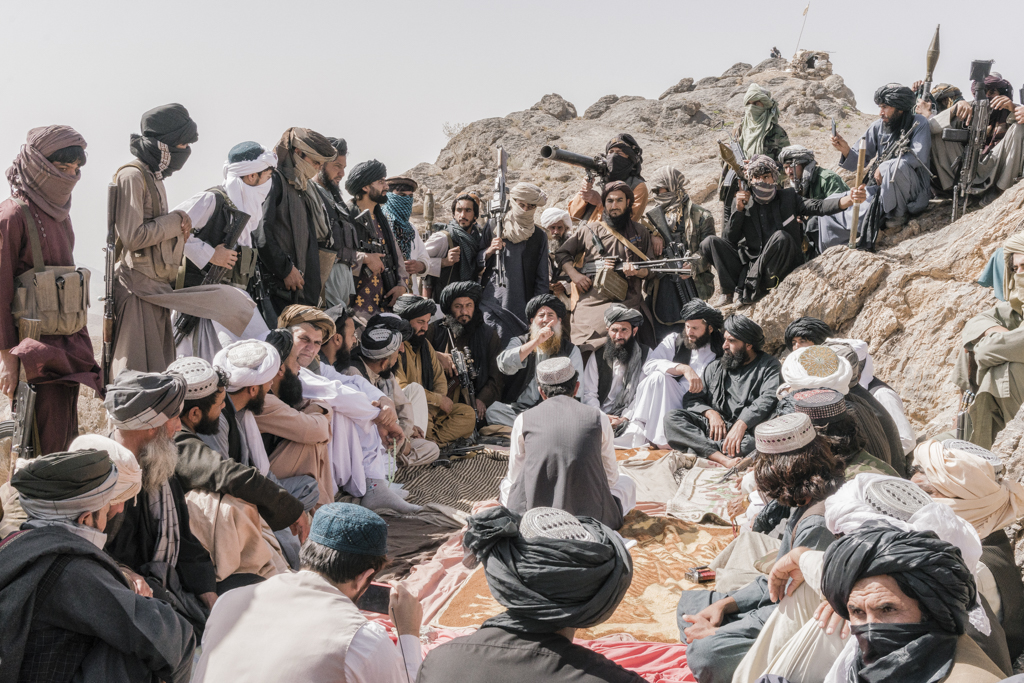
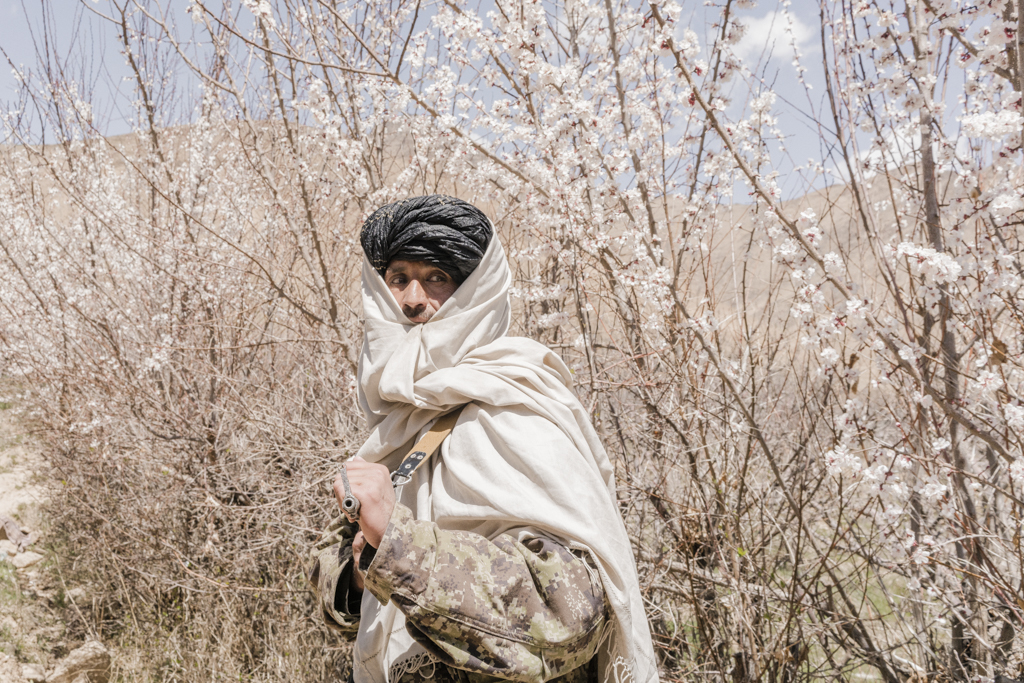
What is happening in Baghlan is an open secret. Over recent months, the NDS and influential politicians in the government have been paying hundreds of militias all over Afghanistan — often on behalf of third countries with their own agendas — to preserve their influence and buy a stake in Afghanistan’s future once the U.S. withdraws.
“Even President Ashraf Ghani has sought help from warlords to support his position. It’s a give-and-take game. When politicians don’t need the people, they let them down. This government and the president do not care about Afghans,” says Rahmatullah Nabil, a former NDS chief.
Belqis Roshan, an independent member of parliament from Farah province in the Wolesi Jirga (the House of People), explains the logic of this lethal investment. “The government is formed by the same warlords from the ’90s civil war. They will lose all the power with the Taliban’s return. This is why they give weapons to the people. They don’t want peace. Instead of arming militias, why wouldn’t they put this money into the armed forces?” These leaders are trying to secure their influence at the expense of the country’s future, she warns. “How can we be sure these militias will respect the law? All the millions spent in the past for disarming programs are wasted. These groups are worse than the Taliban.”
These self-serving actions have the potential to perpetuate conflict and diminish the willingness to compromise. Most fighters’ bravado is accompanied by a weariness with the decades of fighting.
“I will always fight the Taliban,” says Jalal. “However, if peace comes and there will be a fair agreement, without them imposing their values on us, we will be ready to stop fighting.” For him, it would be hard to see a peaceful Afghanistan. The same goes for his men — men like Bismillah Rasuli, 42, a former government officer who joined the militia six years ago: “I wanted to protect my people. The Taliban are a violent group. We need to fight them, but we really hope for peace, to sit at the same table with them. After all, we are all brothers, and we should rebuild the country together.”
With warlords ravaging Afghanistan, the army and national police have been left weakened. Across the country, they struggle to keep the main cities and highways, often hiding in fortresses and not leaving them. That anti-Taliban factions are raising militias speaks to their low confidence in the security forces of the state they are a part of.
In Wardak province, just a few miles out of Kabul, Lt. Mirwali, from the Afghan National Police, patrols the last checkpoint outside the town of Maidan Shahr with his men. “Taliban target us especially in the dark with laser guns,” he says, as he looks from the top of a hill into the neighboring Nerkh district, controlled by the Taliban. “We and the Taliban over there, we are all from the same communities and we know each other. It’s dangerous for us to walk around with uniforms. They could retaliate against our families.” They had killed one of his men the previous night.
Another of his men, Qudratullah, 25, knows what this means: “The Taliban killed my father and two of my uncles because I joined the special forces in the past. I came back here to take care of my family. I am ready to forget everything if peace comes. We will all sit together and be brothers.”
The Taliban, however, are not the only danger Afghans have to contend with. A more implacable threat lurks below the very soil.
“Roadside bombs and mines are strong weapons against us,” says Waziri, 31, a professional police de-miner. “My trainer always told me: The first mistake is also the last.” He smiles. “Here in Wardak, in the past four months I have found almost 50 mines. Sometimes they are handmade. Once, I found one connected to three different devices. First, I cut the cables. Then I put a jammer to avoid them using a remote control, and finally I made them explode it by weight pressure.”
Waziri was forced by his commander to become a de-miner. “We just serve our country. My family doesn’t want to let me go every time I visit. It’s only about chance.”
On the Kabul-Kandahar highway going through Wardak, signs of mines and bombs are visible everywhere. The asphalt tarmac is pockmarked with earthen craters. A few feet from a government checkpoint, the white Taliban flag replaces the red, green, and black national one. Opposite Lt. Mirwali’s detachment is a Taliban one led by commander Mohammed Nazir, battle name “Mawlawi Saber,” whose men target the government troops.
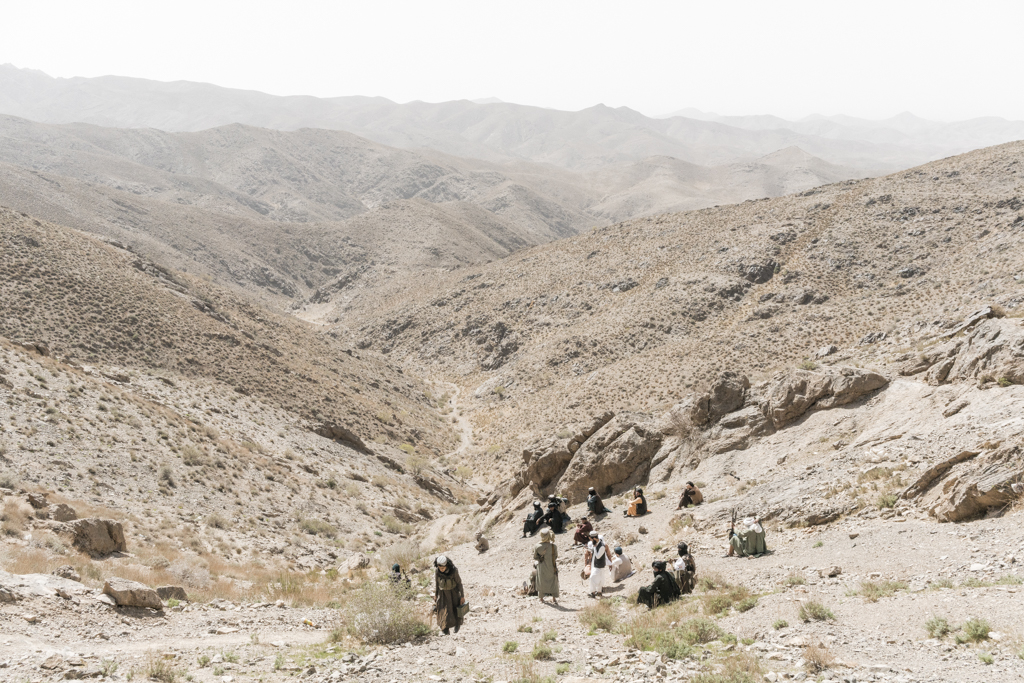
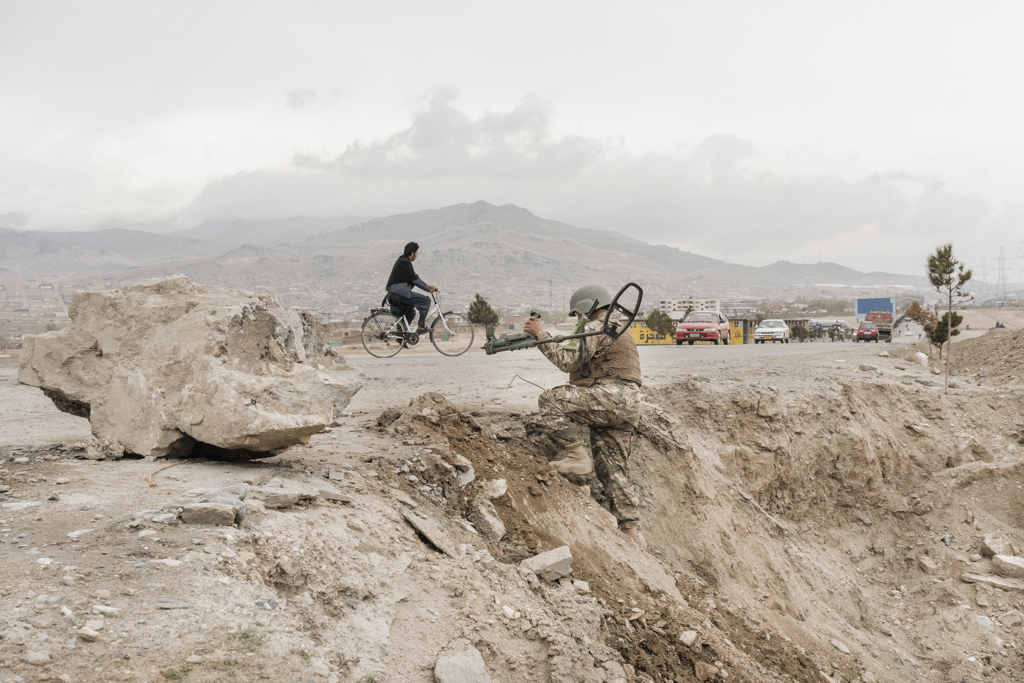
The Taliban patrol the area on motorbikes, weapons slung across their backs, in traditional shalwar kameez (Afghan tunic and trousers), turbans, shoulder-length hair, wild beards, and surma (kohl), following what many believe is Prophet Muhammad’s tradition. Mawlawi Saber sits in the shade of trees, surrounded by his men. Overhead, NATO military planes fly, and gunshots punctuate the silence. “Fighting the occupation is our religious obligation,” he says. “NATO and the foreign troops have to go. Once they do and an Islamic values-based government is established in the country, peace will come. We Afghans are all brothers.”
Mawlawi was a student when the Americans first invaded Afghanistan in 2001. He abandoned his books and responded to Mullah Omar’s call to defend the country against foreign aggression: “Living at war is very difficult. I am sure that building the country again with the others will be very easy.”
One of his men, Ajmal, 25, also left his studies to join the resistance. “Many of us lost families and relatives. However, this is our duty, and we will fight until peace comes.”
The Taliban see themselves as the victors in the 20-year war with NATO and its Afghan allies. They, too, have paid lip service to turning the page and ending hostilities. But, as with the other side, their willingness to make peace is conditional on an outcome favorable to their interests. Now that President Joe Biden has confirmed that the remaining 3,500 NATO troops will withdraw by Sept. 11, the Taliban have intensified their military operations to secure their post-occupation dominance.
All this is happening at a time when the U.S. is pushing for a historic conference in Istanbul later this year to negotiate a peace deal between the Taliban and Afghan government. The aim is to secure a cease-fire and create a transitional government.
Nabil, however, is pessimistic: “To avoid spoilers, the U.S. have decided to include Pakistan on the negotiating table. But other decisive actors such as China, Iran, Russia, and India have been excluded. The rivalry between them has led them in the past to support armed groups aligned with their interests. We also fear an imposed agreement based on ideology and ethnicity. The Taliban, the government, and warlords in this country are the only political entities that the international community seems to recognize as interlocutors. This excludes the majority of the population, which does not recognize itself in these categories.”
Many fear that these destabilizing conditions could lead to more civil conflict and eventual Balkanization. “This agreement seems to be a way for Westerners to exit the conflict without admitting defeat and later blame Afghans for any resulting instability and conflict,” says Nabil.
If the government lacks power and depends on other countries’ decisions, the Taliban, too, suffer divisions. The faction under Mullah Haibatullah Akhunzada, which is negotiating with the U.S. in Doha, is not universally supported. Among its opponents are Mullah Manan Niazi and thousands of men across Afghanistan’s western provinces.
On top of a rocky mountain surrounding the city of Herat, Manan gathers hundreds of his men around him. Silently, they listen to his passionate voice and solemn speech. Sometimes, one of them screams “Takbir!” and the rest reply with an emphatic “Allahu Akbar,” showing their high spirits. “The Islamic Emirate of Afghanistan is the real victim of this war. It fought 25 years to protect Afghanistan and its people. But Pakistani intelligence services made the Taliban … a mere puppet for their own interests. They are paid by non-Muslims to kill other Muslims. Not only by Pakistan, but also Iran, Russia, and China,” he remarks. For him, a real Talib “fights for humanity, protects it, and implements God’s will and laws.”
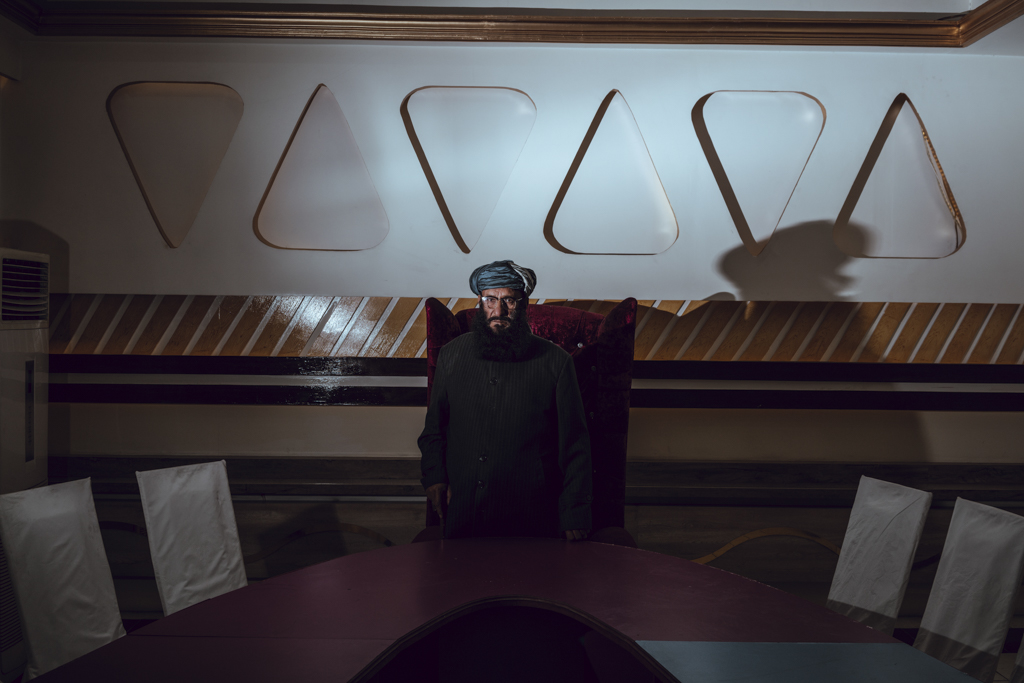

Manan seceded from the main Taliban in 2015 and has been fighting them ever since. His group is also fighting NATO, government forces, and Iranian proxies, which, according to him, try to cross the border every night. “This will be Afghanistan’s next problem,” he says. “We already defeated NATO. They aren’t a real threat anymore. We are stronger. Alexander the Great, Brits, Russians, and now them.”
As the day draws to a close, Manan retreats to a small, muddy house. Inside, his face illuminated by the last of the sunlight, he enjoys his tribal elders’ singing a war nasheed (religious song): “Afghanistan, graveyard of the empires. We are the proudest nation, and the world has to accept it.”
There’s a sound of gunfire, and soon his men are positioned on top of the hill, ready to fire. “I really hope for peace,” says one of his men. “I hope not to see any mothers lose their sons or sons lose mothers. I hope to see brotherhood among all of us”.
It’s not just the Taliban who are eager to see the departure of international forces. Many among the civilians in the provinces are also happy to see NATO leave. In Wardak province, many children and men bear the signs of war — scars, seizures, leg prostheses — most due to drone bombings by the coalition.
Samiullah, 22, a tailor from Oryakhil village, smiles because he doesn’t like talking. “When I was 12, an American drone hit me. I was going back from school. I lost my leg.” Now, he has a prosthesis: “At first, I wouldn’t accept it. I was mocked by other children, and it hurt especially when I wanted to join the Taliban’s resistance and they would not let me. Now I am happy. I can make clothes for them and donate some money to their cause. The foreign troops are evil and the main cause of all our problems.”
In his area, many suffered from the night raids, which a U.S. Army general described as “critical” to winning the war. In Shahid Khil village, some 20 kilometers (12 miles) away, at the bottom of a narrow valley, Janatmir Shahid Khil, 50, can barely contain his anger: “Two years ago, government forces and foreign troops dropped bombs here. Later they attacked and killed eight people. They were students, engineers, professors. Innocents. They destroyed my house before they left. We educate our children to fight against foreigners. But we want peace. They are killers. When NATO will go away it will be a great day for Afghans.”
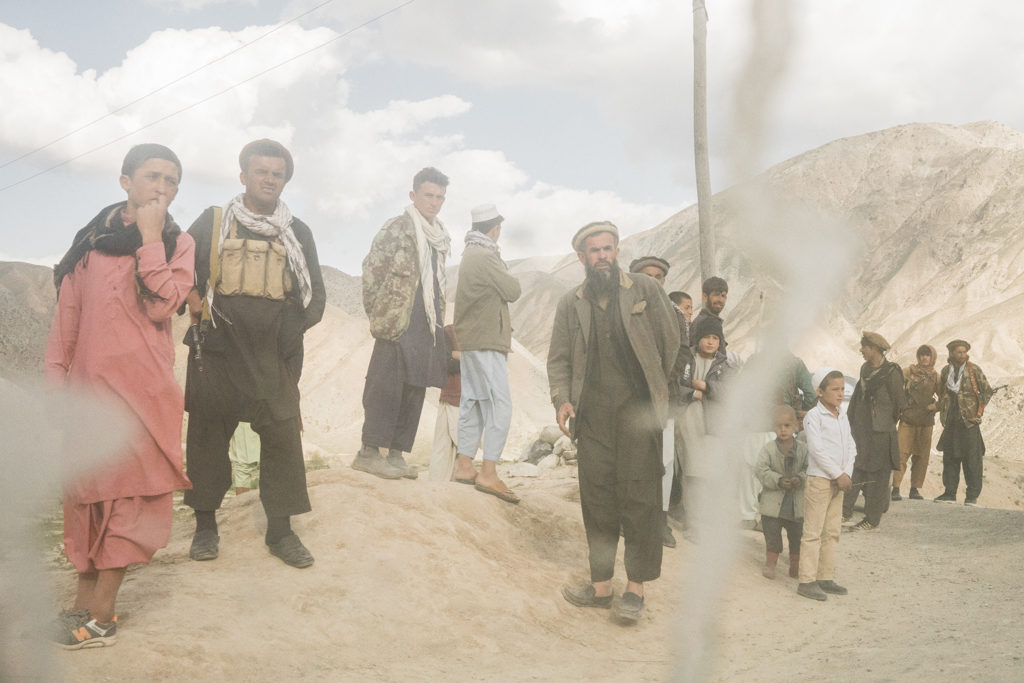

In another village, Sarmarand, the Musa-i-Shahid school opens only two days a week because of the war. Professors and managers witnessed the same: “Once they attacked during the day with soldiers, killing civilians in front of our small children. It is horrible,” recalls Wahidullah, 60, manager of the school. “Students are scared when they hear planes flying in the sky,” he adds. One of his professors, Rahimullah, 58, lost seven members of his family after a bombing raid destroyed his house: “The soldiers broke in during the night. International soldiers stayed in the courtyard, meanwhile Afghan commandos came to my bedroom, badly hitting my children and me. They told us we were Talibs. After 24 hours they left. Nobody helped us. Foreigners came only to kill us. I still cannot sleep. We will be so happy when they will leave our country and put an end to the occupation.”
In their quest to end the war, Western powers, the Taliban, and Afghan government have so far excluded the population from discussions. “People do not want an Islamic Emirate, they do not want this corrupted and useless government led by warlords, but they want a new Islamic government,” says former Talib Mawlawi Qalamuddin, who is also supported by Ghulam Farouq Wardak, a former minister under the Karzai administration and one of the main creators of the 2004 Afghan constitution: “This government only represents 1 million of a country of 38 million people. It is corrupt, it arms militias, and it doesn’t care about Afghans. We want a new generation and the departure of NATO. At first, we thought they came to save and reconstruct. Only later we understood they only came to fight and kill.”
Without investment in reconstruction, and without discouraging regional players from turning Afghanistan into a proxy battleground, a Western withdrawal will have merely taken the country back to its troubled 1990s. For lasting peace, the international community needs to listen to ordinary Afghans too, not just the men with the guns.
Essay by Filippo Rossi; photos by Emanuele Satolli.
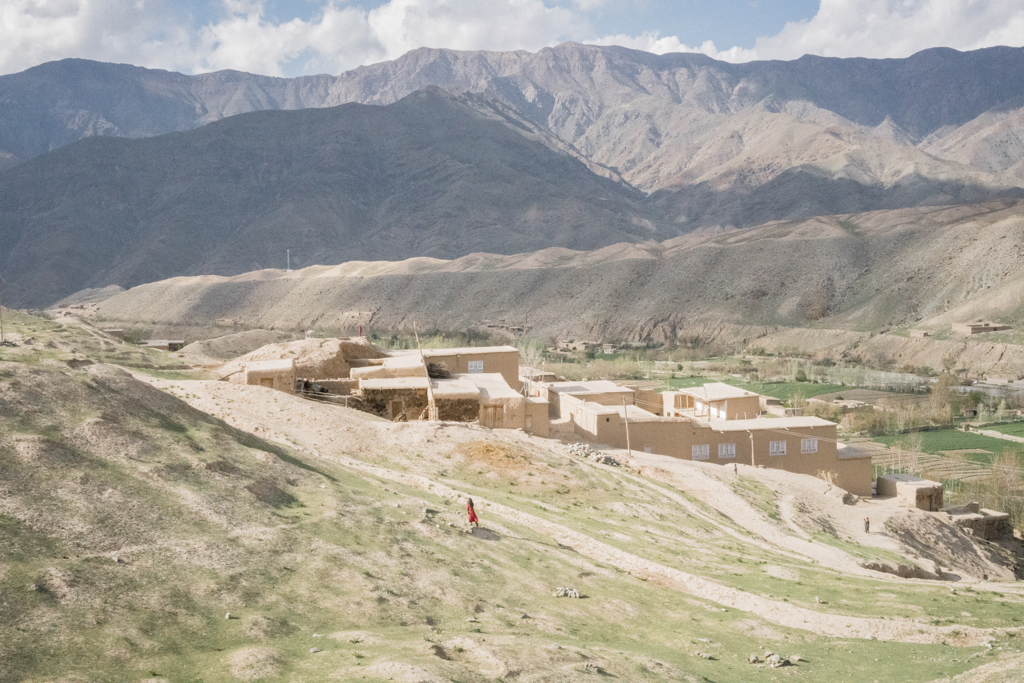
A village in Taliban-controlled Baghlan province. Aside from Taliban fighters, local pro-government militias supported by the NDS (the Afghan secret service) are active in the province.
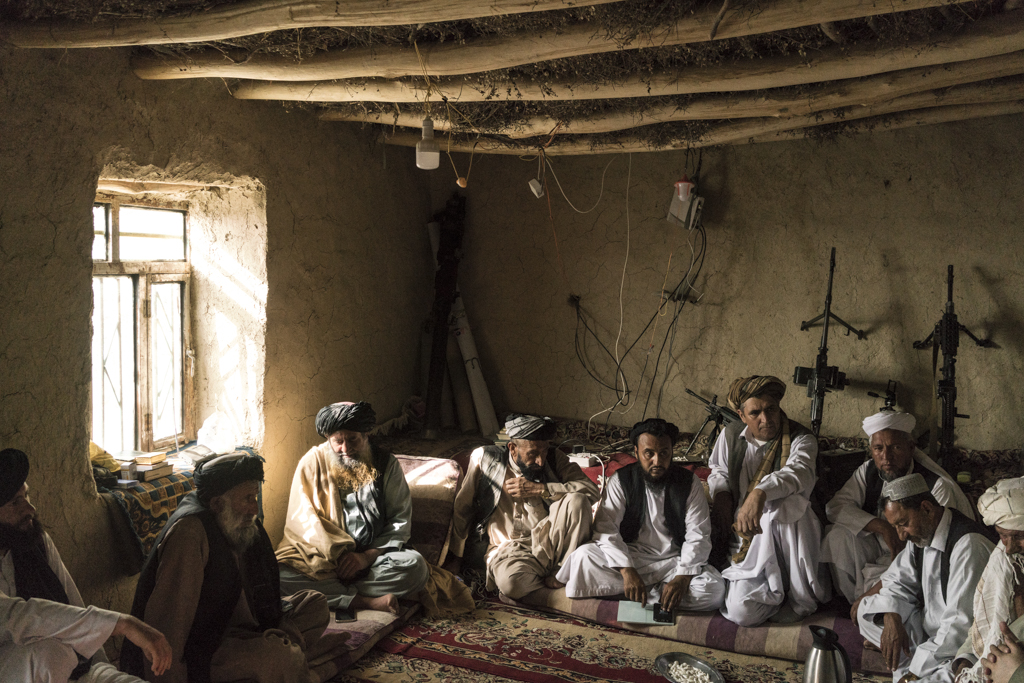
Mullah Manan Niazi (third from left) sits with followers in a house in a mountain area in Herat province.
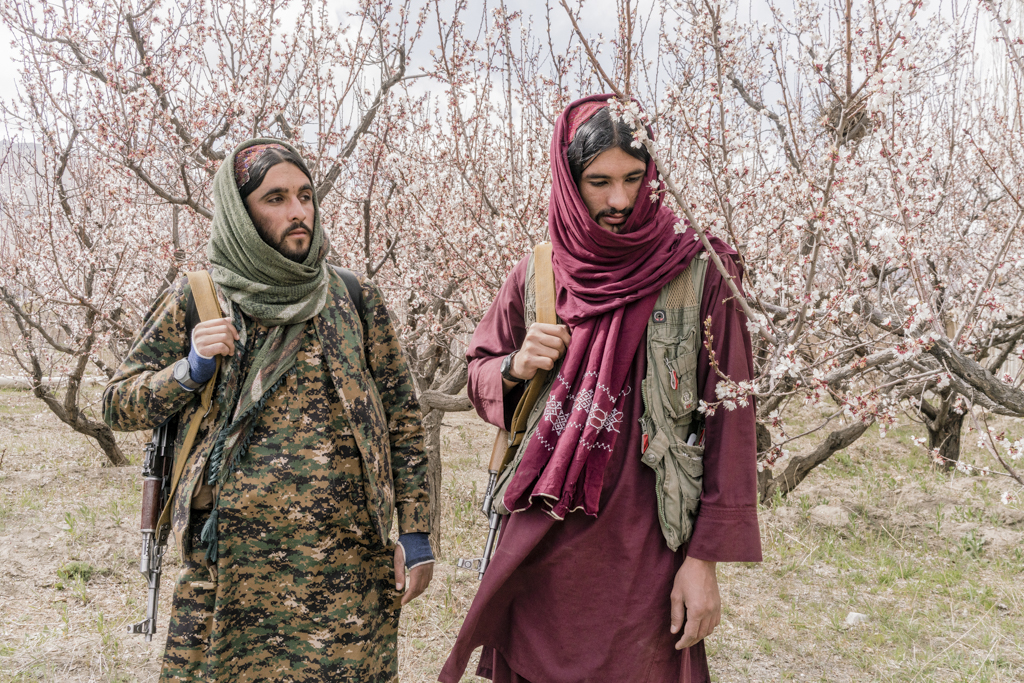
Taliban fighters stand next to a tree in the countryside in Nerkh, a district of Wardak province.
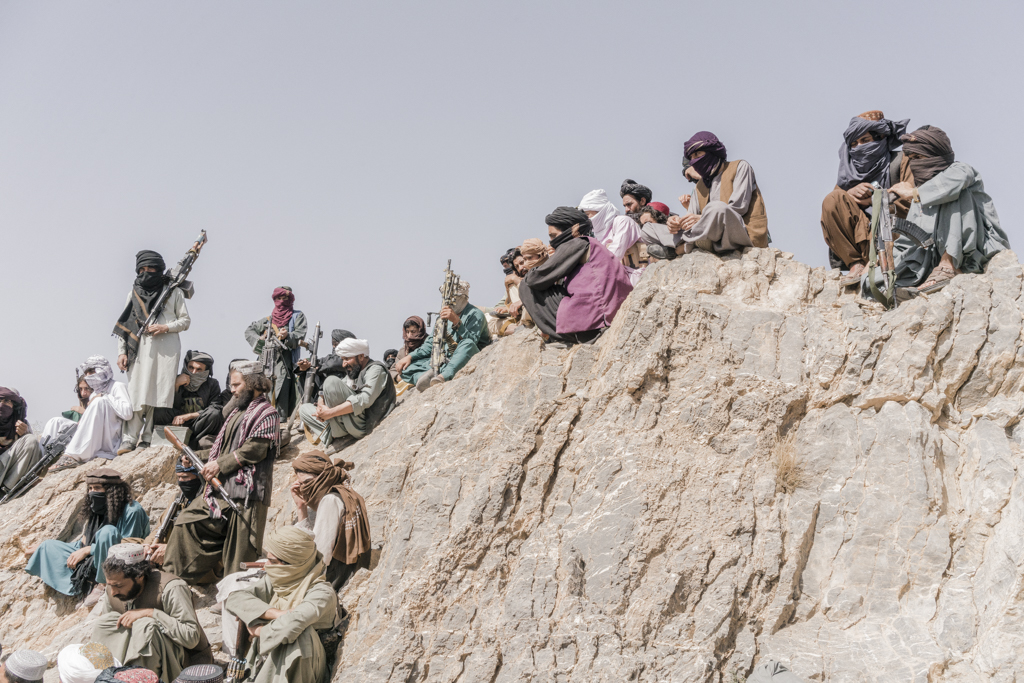
Fighters for a breakaway faction of the Taliban stand in a mountain area in Herat province.
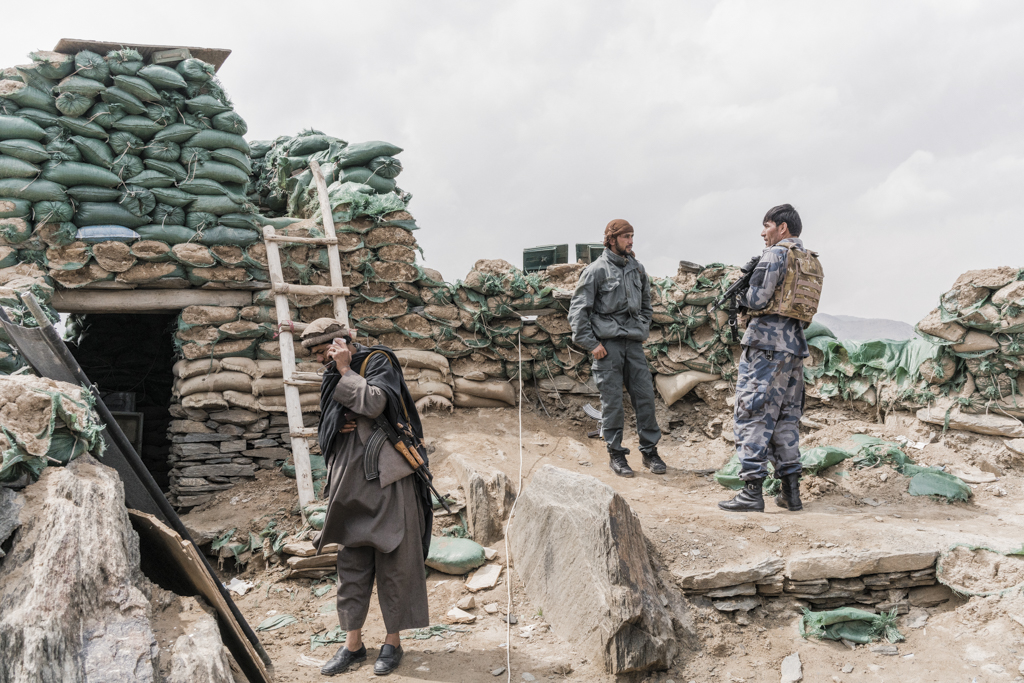
Members of the Afghan police stand at the last checkpoint before the Taliban-controlled area in Wardak province.
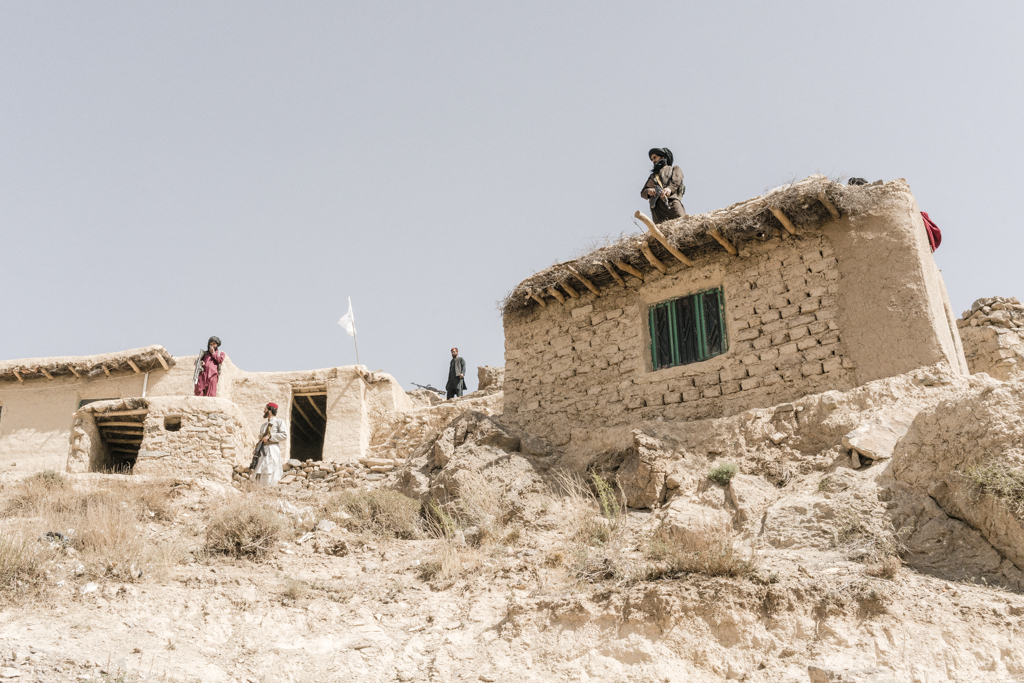
Breakaway Taliban fighters stand guard in a mountain area in Herat province.

Taliban fighters walk in the countryside in Nerkh, Wardak province.

A boy stands in a village in Baghlan province.

A fighter for a breakaway faction of the Taliban stands guard in a mountain area in Herat province.

Members of the Afghan police stand next to a blast wall at the last checkpoint before the Taliban-controlled area in Wardak province.
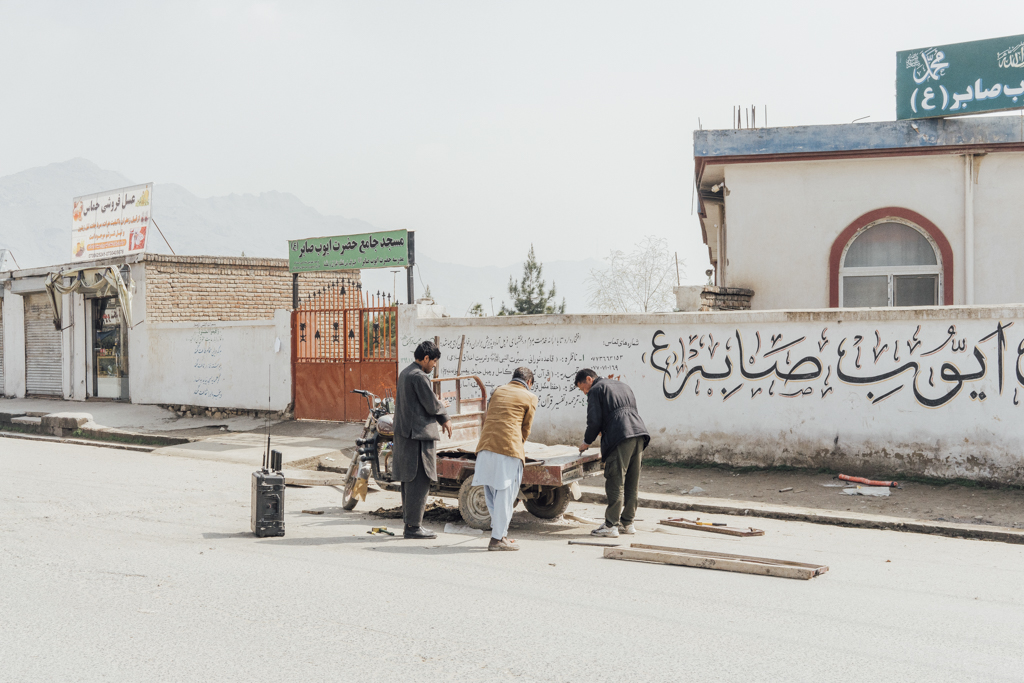
Members of the NDS dismantle a cart loaded with explosives in Kabul.
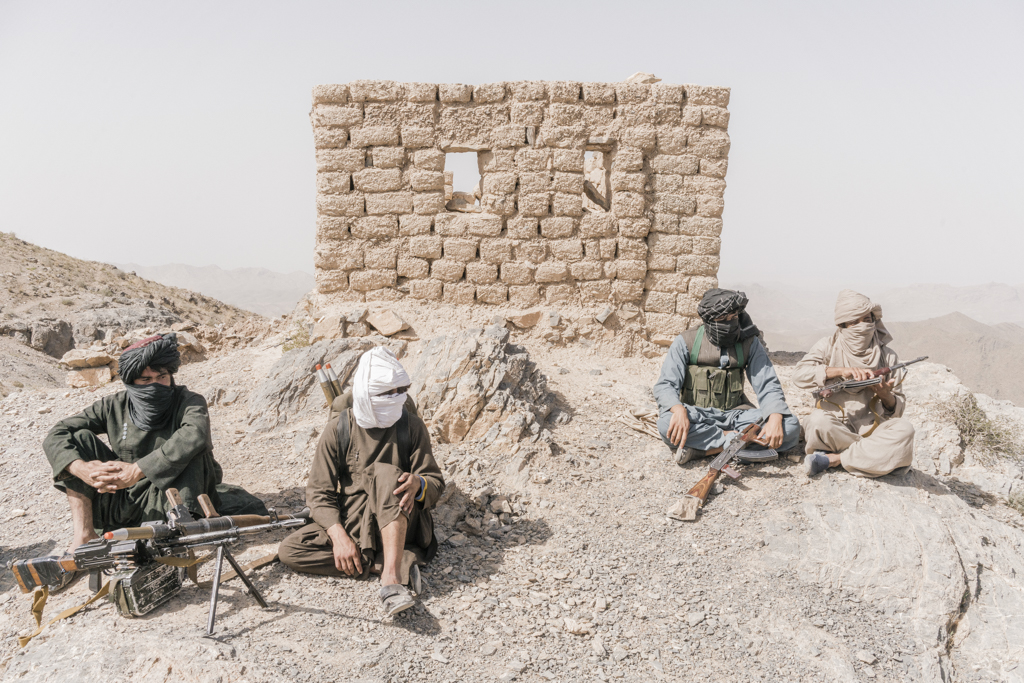
Breakaway Taliban fighters sit in a mountain area in Herat province.

Jalal, who commands a militia formed by civilians in the village of Khinjan in Baghlan province, sits in his house.

Rahmatullah Nabil, a former NDS chief, with his dogs at his house in Kabul.

Fighters for a breakaway faction of the Taliban stand guard in a mountain area in Herat province.

A woman walks along the street in Herat, the second-largest city in Afghanistan. Despite improvements to the economy after the fall of the Taliban regime in 2001, the country remains highly dependent on foreign aid.
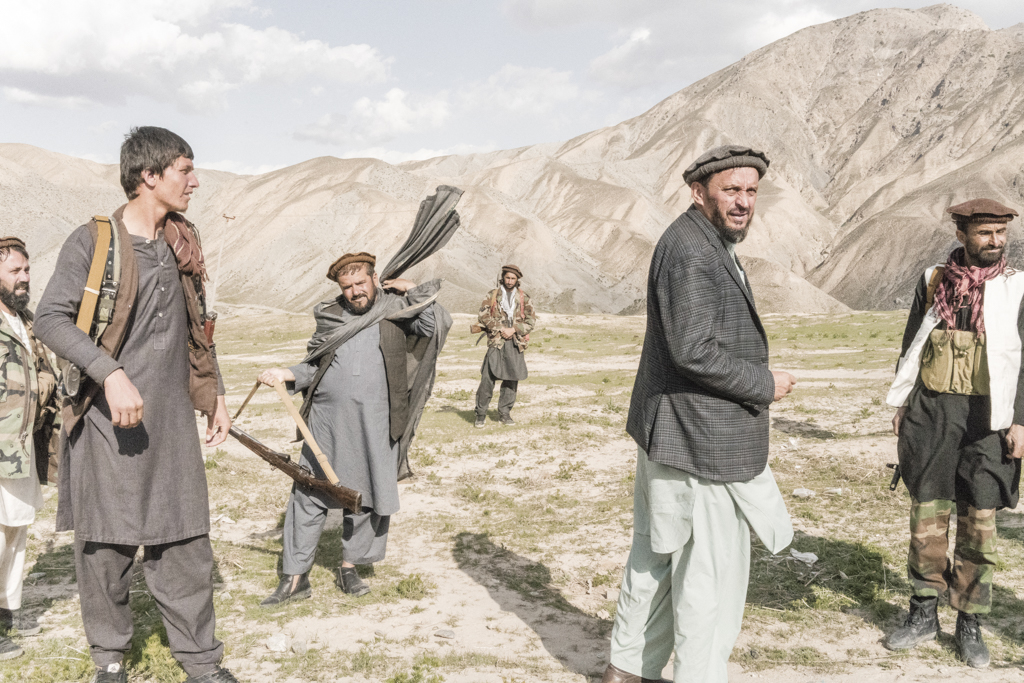
Members of a local pro-government militia supported by the NDS patrol a village in Baghlan province.
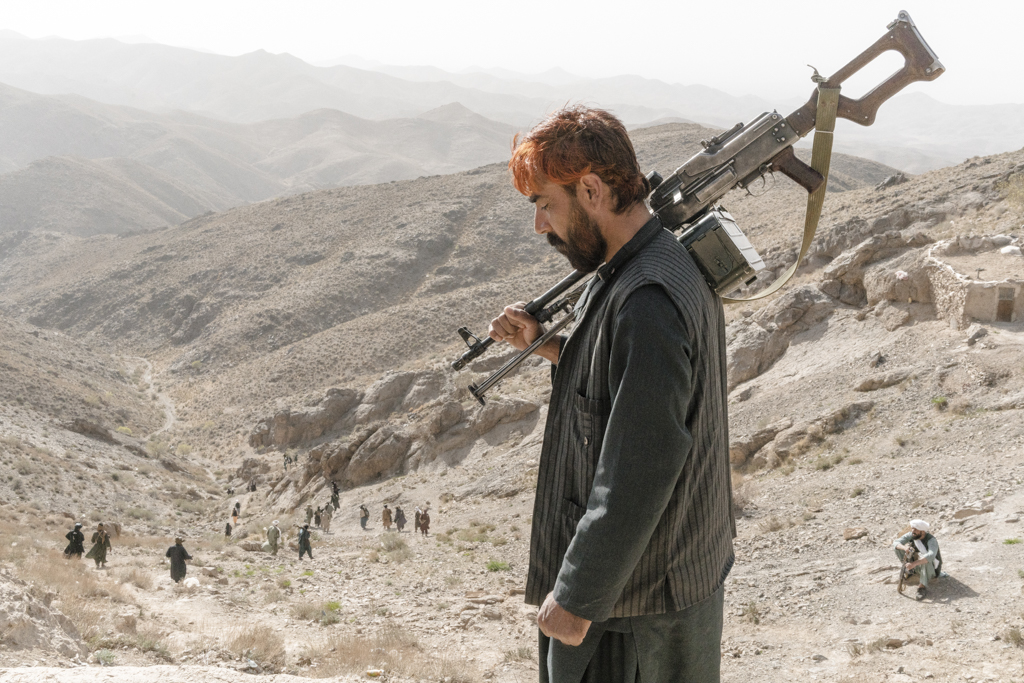
A breakaway Taliban fighter stands guard in a mountain area in Herat province.



